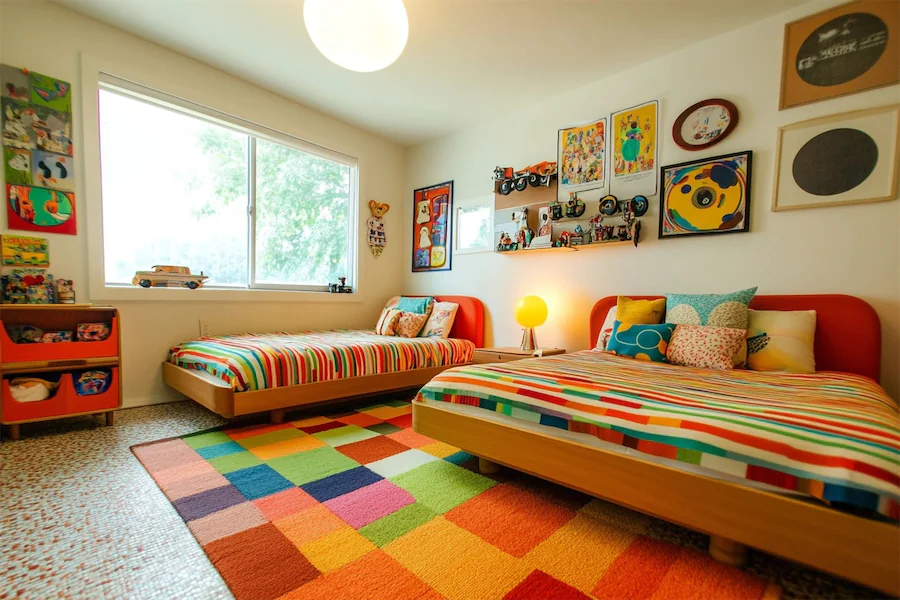Designing a retro-inspired kid’s room blends nostalgia with creativity, crafting a space that’s both charming and functional. By incorporating vintage elements, you can create a unique environment that reflects timeless styles and caters to your child’s needs.
Introduction to Retro Kid Rooms
A retro kid’s room incorporates design elements from past decades, such as the 1950s through the 1980s, to create a nostalgic and playful atmosphere. This style often features bold colors, geometric patterns, and vintage furniture, offering a distinctive alternative to contemporary designs. Embracing retro aesthetics can result in a lively and inviting space that stimulates creativity and comfort for children.
History and Origins of Retro Kid Rooms
The concept of retro design in children’s rooms emerged as a way to celebrate and preserve the distinctive styles of previous decades. Each era brought unique design trends: the 1950s introduced vibrant colors and playful patterns; the 1960s embraced bold, psychedelic motifs; the 1970s favored earthy tones and natural materials; and the 1980s showcased bright, neon colors and geometric shapes. Incorporating these elements into modern children’s rooms allows for a nostalgic nod to the past while creating a fun and engaging environment.
Key Features of Retro Kid Rooms
- Bold Color Palettes: Retro designs often utilize vibrant colors like mustard yellow, teal, and burnt orange, creating an energetic and cheerful ambiance.
- Geometric Patterns and Prints: Incorporating patterns such as stripes, polka dots, and abstract shapes adds visual interest and reflects the design trends of past decades.
- Vintage Furniture: Selecting mid-century modern pieces with clean lines and organic shapes contributes to the retro aesthetic. Items like wooden dressers, metal bed frames, and classic rocking chairs are popular choices.
- Decorative Accessories: Incorporating vintage toys, posters, and textiles enhances the nostalgic feel. Elements like lava lamps, rotary phones, and retro artwork can serve as focal points in the room.
Applications of Retro Kid Rooms
Implementing a retro design in a child’s room can serve various purposes:
- Personalized Spaces: Tailoring the room with vintage elements that reflect the child’s interests, such as retro-themed posters or antique toys, creates a unique and personal environment.
- Sustainable Design: Utilizing second-hand or repurposed vintage furniture is an eco-friendly choice that adds character to the room.
- Educational Value: Incorporating historical design elements can spark curiosity about different time periods, providing educational opportunities within the living space.
Considerations When Choosing Retro Kid Rooms
When designing a retro-inspired kid’s room, consider the following:
- Safety: Ensure that vintage furniture and accessories meet current safety standards. Sturdy construction and non-toxic finishes are essential.
- Functionality: Balance aesthetic appeal with practicality. Choose furniture that offers adequate storage and suits the child’s daily activities.
- Cohesiveness: While mixing elements from different decades can be appealing, maintaining a cohesive theme prevents the room from feeling disjointed.
- Adaptability: Design the room with flexibility in mind, allowing for updates as the child grows and their preferences evolve.
Conclusion
Creating a retro kid’s room is an opportunity to blend nostalgic design with modern functionality, resulting in a space that’s both stylish and suitable for a child’s needs. By thoughtfully selecting vintage elements and considering safety and practicality, you can design a room that honors the past while providing a joyful and inspiring environment for your child.
